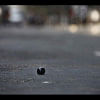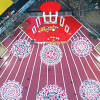4 Lesser-known facts about Ekushey February

Ekushey February (21st February) is known in Bangladesh as Shaheed Dibosh (Martyrs' Day). The day has been recognised by UNESCO and is now known worldwide as International Mother Language Day. We grew up reading about the great day and what it stands for but still, there are facts about Ekushey February that are lesser known.
Here are facts you probably did not know about Ekushey February.
The martyrs were killed on separate days
We have grown up reading the names of the martyrs, Rafique, Shafique, Salam, Barkat, but did you know that not all of them were killed on the same day? The shooting happened over the span of a few days.
On 21st February, Abdul Jabbar, Rafiq Uddin Ahmed, and Abul Barkat were shot. Abdus Salam was also shot on 21st February and later died from his injuries on 7th April 1952. Shafiur Rahman and another student was shot on 22nd February in front of the high court. In the Sadarghat area, a rickshaw puller was shot dead on the same day in a separate procession.
22nd February 1952 was the peak of the movement
While we pay tribute to the martyrs on the 21st February, the peak of the Language Movement was actually the 22nd of February, 1952. The incidents started getting heated on 21st February and a few were shot dead which ignited the spirit of the movement. As a result, the next day the movement was at its highest momentum.
On this day, in the absentee funeral prayer (Gayebi janaza) of the martyrs, a few lac people were gathered, a never before seen gathering at such a grand scale at that time. Police shot at the procession that followed the funeral prayer. Workers were boycotting and refusing to attend their jobs. The whole town came to a standstill. The office of 'The Morning News' was lit on fire at Sadarghat and police shot at processions in Sadarghat as well. Trains were not running, even government officials were coming out of their offices to attend the processions.
The Language Movement was not Dhaka-centric
While most of our national movements and revolutions were centred around Dhaka and led by the capital, the language movement observed a different scenario. It is true that the most heated incidents were happening in Dhaka but soon afterward, Dhaka became less intense due to various reasons such as frequent police raids and arrests of influential leaders. This dimmed the movement a bit but fortunately, the rest of the country took over and kept the intensity and the spirit of the movement alive.
The Language Movement reached every corner of the country. Even the most rural areas of the country were aware of the movement and they were doing their part. As a result, the authorities found it difficult to just suffocate and eliminate the movement or deny that it ever happened. With such a strong response from the whole country, especially the rural areas where the majority of the people lived, the authorities had to concede. This is another proof that the language movement has always been a literary cultural movement rather than a political one.
The Ekusher Gaan was written as a poem
21st February always reminds us of the Ekusher Gaan. The iconic "Amar Bhaier Rokte Rangano" is sung by everyone in reverence for the martyrs. The song was first written by Abdul Gaffar Choudhury as a poem. He wrote it sitting at the bedside of an unnamed language movement activist at Dhaka Medical College in 1952. Abdul Latif first composed music for the lyrics and Atikul Islam was the first person to give voice to it as a song. Later, Altaf Mahmud learned the lyrics from Abdul Latif and recomposed the music; now we sing the song as composed by Altaf Mahmud.

 For all latest news, follow The Daily Star's Google News channel.
For all latest news, follow The Daily Star's Google News channel. 








Comments